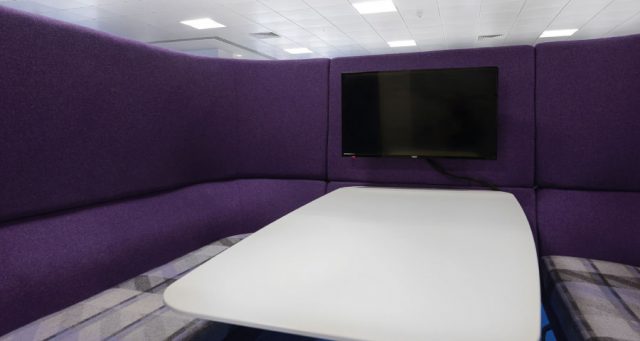You have the opportunity to close the deal on a call, but when your team sits down in the huddle room, all you have to capture the voices at your end is the mic built into your laptop. Everyone is leaning over each other to talk into it, but the audio pickup is lousy because the laptop mic was never designed for this.
The situation is awkward for the participants on both ends, and it doesn’t present the professional image you want to portray to the client. The moral of this story that is repeated in meeting rooms around the world is that the right microphone is a necessity for any collaborative meeting space—from the smallest huddle room to the largest conference theatre.
To get great meeting room audio, you need the right professional mic for the job. There’s no one-size-fits-all solution, but here are some important considerations to help you choose the right mic.
Picking up the right pattern
 Every mic has its own specified pickup pattern. This refers to the distance and angle from which a person can be heard with the mic.
Every mic has its own specified pickup pattern. This refers to the distance and angle from which a person can be heard with the mic.
Mics with different pickup patterns are available for different audio applications. For instance, a cardioid mic used at football game is super-directional—that is, sensitive to anyone speaking directly into it but rejecting the crowd’s roars coming from all around. In contrast, an omnidirectional mic is used whenever you want to pick up sound from all directions equally—as in a meeting room. The challenge with an ‘omni’ lies in minimizing echoes and background noise.
Also, some mics are designed to pick up sound from great distances. Others are meant to reject everything but what is directly nearby, to minimize noise. Which one you choose depends on what you need to use it for.
Evaluating your space
Before you can determine what kind of mic is right for your room, you should measure your space. These measurements will help you narrow down the kinds of mics that would work well there, and which wouldn’t.
You then need to factor in reflective surfaces such as tables, raw walls, and windows. They will cause echoes in many cases, requiring a mic with shorter pickup distances. Then you should think about sound-absorbing materials such as curtains, rugs, and the people sitting in the room. How many will there be, and how will their sound-deadening qualities influence the kind of mic you buy?

In a small huddle room, a single omnidirectional mic in the ceiling or middle of the table may be sufficient to adequately capture everyone’s speech. This includes people who are moving around during a presentation. If table space is limited, a ceiling mic is a good option (also eliminating the clutter of cables on the tabletop).
In a larger and/or taller room where echoes are a problem, individual or shared directional tabletop mics may be a better choice. Because tabletop mics are located closer to the people speaking than overhead ceiling mics, they provide better audio pickup. At the same time, tabletop mics are prone to being fidgeted with by participants, as well as amplifying close-by audio distractions such as users tapping their pens or clearing their throats.
The beauty of beamforming
Whatever mic solution appeals to you, focus on achieving audio clarity first and foremost. Doing so again comes from choosing the right mic for the space and for your meeting types.
Here’s a shortcut: Look for a mic with beamforming technology, which is capable of constantly optimizing a speaker’s audio pickup even if they are moving around the room. How is that possible? A single beamforming microphone consists of eight element beamforming mic arrays built into a single housing, allowing for three 120-degree zones to equal 360 degrees of coverage. This design enables the mic to locate the speaker’s location and angle to the mic. By tracking voices even when they’re moving, the beamforming mic array provides clear audio for participants on the far end of the call so they don’t miss important parts of a meeting or presentation.
A second shortcut: Look for a mic that comes with noise cancelling technology to eliminate echoes and extraneous noise that distort the presenter’s speech.
Clearing up muddy audio
Today’s technology allows you to find a mic that prevents muddy, hard-to-understand audio in any of your meeting spaces—no matter their size, characteristics, or uses. There is no single ideal meeting room or even audio arrangement because spaces, user preferences, and organizational goals can vary widely. But whatever your space, remember to reserve all laptop mics for personal use only.
Contact us so we can help you with your meeting room microphones and audio.
